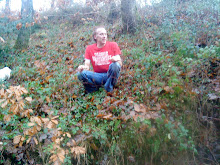 Will it Survive or won't it?
Will it Survive or won't it?Before starting a large scale introduction of a new species; I like to try a few out first, in a few safe places and then observe the progress over however much time I feel is necessary, when or if larger scale introductions will be necessary.
Some plants are obviously very tough; Willows, for example, needed no trial. Same with wild Blue Bells. Both grew here already, but in only a few places and not in any great numbers. So with both plantings began in the wild on year1.
Wild Daffodils needed trials to determine A) If they could survive up here on the moors. B) If they were able to propagate themselves up here. C) With Wild Daffofils being and endangered species; before large scale introductions began; I also conducted experiments to determine the impact of my various collection methods upon controlled small areas in the wild. Wild Daffodils now are my most widespread plant. Mostly around Dartmoor, but I think in a few years time, people might not regard it rare anymore.
 Trees and plants in the early years, were all planted in small groups and in a variety of different habitats, basically to see what they would tolerate and what they preferred.
Trees and plants in the early years, were all planted in small groups and in a variety of different habitats, basically to see what they would tolerate and what they preferred.Experiments in the wild are often simultaneous with trials in the garden. Since I dwell slightly higher than most of what I plant, the garden is generally where I start. If they'll grow in the garden; they should survive in the valley below.
Experimentation is a very good and clear way of learning. It saves waist and can avoid learning harsh lessons.
Allot of these initial experiments are quite big now, dotted about, as the first wave of the returning forest, and very importantly; appearing as natural as I can possibly make it.

No comments:
Post a Comment